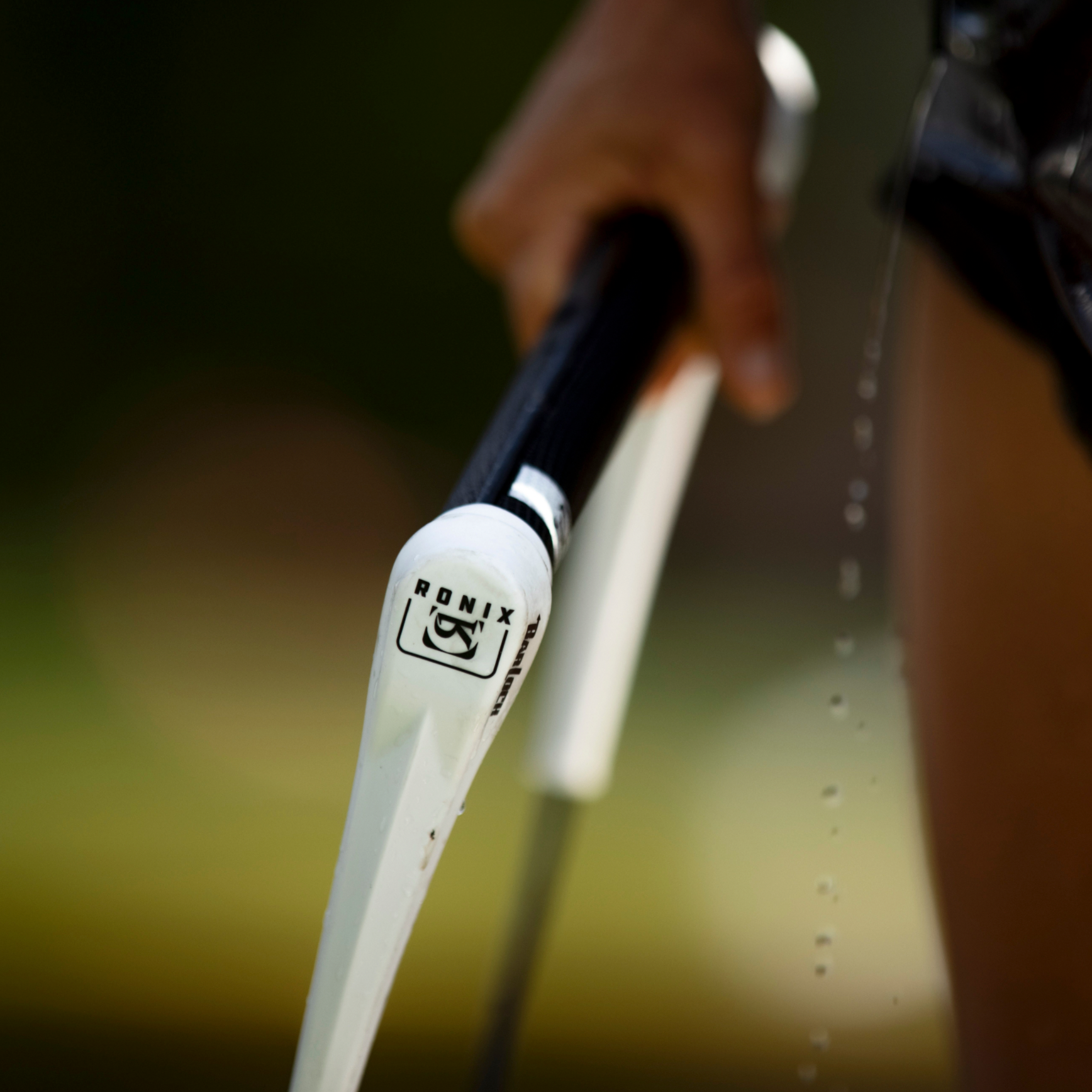Simply put; the fastest way to get through a learning curve is to intentionally fail in the extreme, past your goal, rather than trying to get it perfect on your first try. Your brain is better at remembering where it's been than it is at doing something it's never done before. The teeter totter principle, as I like to call it, is a method of forced failure in order to trick yourself out of your comfort zone.
THE ANALOGY
Have you ever stood on a balance board? Or stood over the fulcrum of a teeter totter? The goal is to find the center balance point, but, by nature, everyone goes about it the least efficient way.
When I taught full-time at The Wakeboard Camp, we had a few balance boards laying around for the students to use. If we didn't give them any instruction on their first attempt, nearly everyone had the same experience.

First, they would stand on the board, with one side on the ground and one in the air. Once they were comfortable, they would start to level the board out timidly until they neared the balance point, then they would teeter back to the ground, and repeat the process. These failed attempts would go on for a while before they would ever pass the fulcrum. When they finally did pass the fulcrum, they would start to wobble back and forth pretty dramatically, either until they fell down or stepped off. They would get the hang of it eventually, but it took some time and risked some wild falls before they could comfortably balance on the fulcrum.
I discovered a different way of teaching this that was faster, safer, and more efficient. I would tell them to start with their dominant foot on the ground first, then intentionally shift their weight to their non-dominant foot all the way until their non-dominant foot touched the ground. Ignoring the mid-point altogether. Then, once they've experienced both extremes, I would instruct them to find center. Summed up, (if you were right foot dominant) it would look something like this; stand with both feet on the board, with the right side on the floor, shift past the fulcrum until the left side of the board was touching the floor, then find the center. Almost every time, they would get the hang of it right away — and once they figured it out, it was easier for them to retain it.
This worked well for two main reasons:
- Like I mentioned earlier, it's easier to remember what the right thing felt like, than it is to know if the new thing you are experiencing is correct. This is why it is better to pass the fulcrum on purpose. Once you've experienced it, it's easier to return to it than it is to find it for the first time.
- When trying something new, most people start from a position of comfort and strength. This is why they usually start on their dominant foot. The problem is, once they pass the fulcrum, they'll have to shift their weight to their non-dominant foot, which is uncomfortable. Approaching it in this way will make them feel less comfortable as they approach the fulcrum. If they try to approach their balance point from their non-dominant foot, the closer they get to the fulcrum, the more comfortable they become, making it easier to find the balance point.
THE APPLICATION
I applied this way of learning to my students on the water as well. Every time I applied it to a trick, it yielded fruitful results. Sometimes it was the only thing that would get my students out of a rut that they had been stuck in for years.

This principle isn't limited to just physical activities, either. It can be applied to anything you want to learn on any sort of spectrum. For example, if you are naturally too timid and you want to get better at being bold, then try being overbearing and offensive. Fail on purpose as far in thee direction of your natural tendencies as possible. Then back it off from there until you reach your center. Go from wildly offensive, to over-bearing, to bold. You'll find that it's much easier to go toward your natural strengths if you start from your weakness. You'll be able to control it much easier.
If you were to start from your natural timid state and try and get more bold, you would struggle really hard with it. You'd only ever allow yourself to get more firm, but may not make it to your true goal of becoming bold without a lot of time and self-discipline.
This can go both ways, too. If you're generally too overbearing and offend people too often and want to become more empathetic and caring, try being really soft and timid, but to a fault. Then work your way back to the happy medium. You'll find the quickest path to your solution by working the spectrum this way.

So, the next time you feel stuck, or feel like you are throwing darts at the board and nothing is really giving you the results you're looking for, give the teeter totter principle a try. Think it through and find the extreme on the other side. If you're comfortable going to the extreme, then anything less will feel easy.











